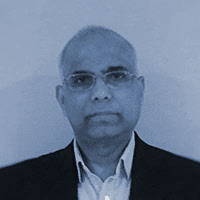Shyam Keshavmurthy, Chief Engineer at Perceptron, explains how PatSnap is helping the company stay on top of its rapidly evolving technology landscape
What does your role at Perceptron involve?
“I’m the chief engineer at Perceptron, in charge of developing new products, coming up with concepts for new products to meet market demands, proving that concepts work, and then getting them into the first round of production. That’s my role.”
What are the biggest challenges you’re facing?
“The big challenge I see is that technology development is incredibly fast right now, and I’ve been in product development for the last 30 years. The pace has picked up significantly in the last five to six years. But getting information about your competition, getting information about what IP they have, and what projects they’re working on through IP is difficult.
It feels like everybody in R&D is moving at the same pace – it’s pretty much a “photo finish” situation. The difficulty then becomes how to innovate and stay up to date without putting your company or your intellectual property at risk – that’s the big challenge.”
Do you have any theories about why the innovation rate has accelerated?
“It’s just that customer product cycles have significantly shortened. For example, Perceptron serves automotive customers, and their product lifecycles have shortened significantly, and complexity has increased for them. So the demand for quick solutions that can solve a certain problem has significantly gone up.
It used to take 6-8 months for a solution to arrive on a shop floor. Customers would run a pilot for six months and then say “yes, this solves the problem”, then buy the product and implement it. So it would take almost one and a half years to have a robust solution.
Nowadays customers expect to have a solution that will work in a pilot form within say, two to three months. Then they want that solution to become a global solution in a matter of six to eight months. This basically accelerates the entire product development lifecycle for everybody who is serving that customer base.”
Are there any developments in R &D that are impacting your work right now?
“One thing we’re seeing more and more often at Perceptron is the cross-pollination of technologies. For example, somebody will develop a product using virtual reality (VR) somewhere, and we are able to take these kinds of ideas and migrate them to production for our own applications.
For example, somebody needs to reduce defects in parts on the shop floor. So they take some of the tools developed for virtual reality and implement them into their solution. For the design studio guy, he just wears his goggles and figures out what kind of defects he can see on the surface, and he improves his design. So there is a lot of cross-pollination going on between various fields and that is really encouraging.”
How does PatSnap fit into your work?
“I’ve set up automated queries so that I can keep track of patents being filed in our technology areas, or applications that have been filed by our competition. I track it every fifteen days, and once a month I generate a report and look at it. If I see something interesting, I dig into it and understand if there’s an overlap between the product development work we’re doing and what’s going on.
The second way I use it is when we are looking at possible solutions. I’ll give you an example. I’m looking for a solution to fix defects on parts. I know people have already developed visualization techniques, so I would start by running a query on just the visualization techniques and see which companies are present and focus on those areas. For example, in the VR area, we’d find companies like Microsoft and Google – then I can query the patents and understand what innovations they have in that area.”
Are there ways that you measure how much of an improvement PatSnap is from how things were before?
“Yes! The biggest measure for me is how much money we’re spending on legal fees.
Previously, once I’d done a preliminary search on the USPTO website, our lawyers would go on and do the detailed search. That would take a few days, then they’d give me a big folder filled with a bunch of patents for me to read. That’s how it used to work. Now I don’t have to do that. I can do it myself. Especially if I use the correct IPC, I can pretty much zoom in on what I want to do. That saves me quite a bit of time and money for the company.
If some sales or marketing team members want information on a company or technology, that would have taken me a couple of days because I’d go in and get the PDFs, read through the PDFs, and then look for the keywords and claims. Then I’d sort them out, stack them together, and then produce the report. Now, it’s quite automated so I can just run my queries and at the end of the day I download only the important patents that are relevant to the project.”
Are there personal drivers behind what you’re doing? Why is this so important to you?
“The way I look at it, it’s kind of like I’m a carpenter. A carpenter is passionate about creating beautiful work. When people take a look at his work, at the furniture, or the things that he has built, they are happy to see it and they say “good work” – and he’s proud of it. It’s the same for me. This is my trade, I look at R &D as my trade. I don’t know how long I’ve been doing it, but that’s what gets me going every day.”
